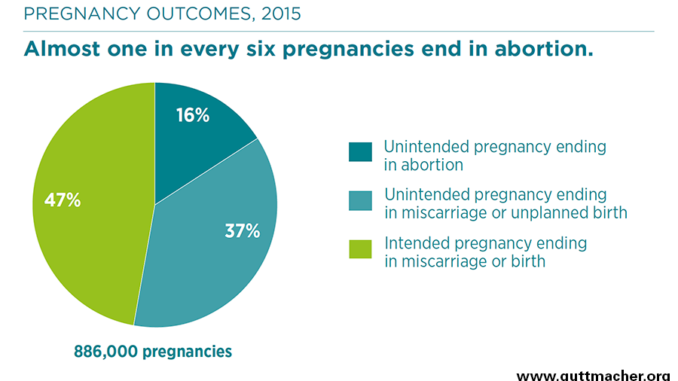
The death of 28 women in Malawi’s resort district of Salima moved Nation Newspaper Features Editor JAMES CHAVULA to probe the situation.
His findings are startling. Nearly 28 pregnant women at Salima District Hospital have died since last year and five of them succumbed to complications of abortions. Out of 168 post-abortion cases admitted to the female ward, four were below 15 years.
A stretcher wheeled into Salima District Hospital’s busy theatre. It was an emergency, certainly.
The teenager was supposed to be in class, but here she was gasping for a breath—her womb perforated, rotting and bleeding severely.
The clinicians, hard at work and perspiring profusely in the sweltering shoreline district in central Malawi, had to act swiftly to save the teen schoolgirl from deadly complications which were a result of clandestinely terminating the pregnancy with the help of unskilled hands.
“If we were allowed to assist every woman with a reason not to keep an unwanted pregnancy, the hospital would save a lot of time, money and personnel that go towards treating such cases. Unfortunately, most of them come too late to live,” says safe motherhood coordinator Yohane Biliati as we pace towards a ward crammed with female patients returning from the theatre.
The rural girl, who was rushed to the hospital by relatives days after puncturing her womb with sticks in a desperate effort to abort an unplanned pregnancy, did not make it back to the ward where pain and uncertainties perching are clear on the faces of the patients on tattered mattresses atop scarce beds and on the floor.
She was stretchered to the mortuary.
Dying young
The short journey in the corridors, where patients, guardians and all visitors stop in their tracks and observe a moment of silence when faced by health workers ferrying a body to the morgue, tragically makes the school-going girl the fifth woman dying of neglected aftermaths of unsafe abortion this year.
“Nearly 28 pregnant women at this hospital have died since last year and five of them succumbed to complications of abortions. Out of 168 post-abortion cases admitted to the female ward, four were below 15 years,” says Biliati.
The youthful midwife supervises the hospital’s busy section where only one of seven nurses and two in eight clinicians have basic skills to conduct manual vacuum aspiration, a procedure required to clean the wombs of women and girls in agony due to complications of incomplete abortions.
The complications constitute the most common reason for admission to the gynaecological wards in the country’s major hospitals, studies show.
No one can say how many girls nationwide are dying due to this silent crisis often eclipsed by stigma, religious dogma and moral debate.
In 2009, the Ministry of Health investigated the magnitude of abortion-related cases in nearly all hospitals in the country and the findings show girls aged below 25 accounted for almost half of 31 000 cases treated for abortion-related complications that year.
“It’s a ticking time bomb,” says Biliati. “Many young girls opt to terminate pregnancies illegally and dangerously because they want to remain in school. Out of 168 post-abortal cases treated between January and March this year, 57 were aged 15 -20.”
In a world where every death of a pregnant woman is deemed one too many, it is tragic that five women at Salima District Hospital died of abortion alone.
This hugely shunned setback to the country’s campaign for safe motherhood causes almost 18 percent of all maternal deaths in the country.
Preventable crisis
This is a public health and social crisis as well as a legal and political question.
The country’s restrictive penal laws only make surgical abortion legal to save a woman’s life.
The authors of the latest study “Incident of Induced Abortion in Malawi, 2015” decry the legal obstacles placed in the path of a girl or a woman who is not ready to carry a pregnancy.
But they also highlight the need to prevent the occurrence of unintended pregnancies by improving access to contraceptives and ensuring that women use them consistently and accurately.
“We need to relax the restrictive laws that push women to procure abortion clandestinely and often unsafely. The figures in hospitals and various studies are not only unsettling, but also show that religious sermons and draconian laws can prevent a woman from getting rid of pregnancy if she is determined to do so.
But government and its partners must also overcome the unmet need for family planning to reduce unintended babies,” says Dr. Chisale Mhango, a gynecologist and researcher based at the University of Malawi’s College of Medicine in Blantyre.
He was among six researchers from the medical college of the University of Malawi and Guttmacher Institute in the United States.
In November 2015, they visited 334 randomly selected health facilities and interviewed 115 health workers who offer postabortion care throughout the country.
“In Malawi, an estimated 141 000 abortions were performed in 2015. This translates to a rate of 38 abortions per 1 000 [sexually active] women aged 15- 49,” they reported last month.
This corresponds to Tanzania, Uganda and other countries in the region, with the south-eastern Africa rate estimated at 35.
But it exerts pressure on hospitals grappling with high disease burden, underfundig and shortage of skilled staff.
Out of the abortions performed two years ago, approximately 60 percent–nearly 84 600 pregnancies—resulted in complications that required medical treatment in a health facility.
The new evidence comes amid a sluggish law reform process.
Just last month, Minister of Justice Samuel Tembenu published recommendations emanating from nationwide consultations by the Special Law Commission for the Review of Abortion Laws empaneled in 2014.
The end of a long wait for the July 2015 report means the Minister is ready to table it before Cabinet before legal minds in his ministry can come up with a bill to be debated in the National Assembly.
If it passes in Parliament, women will be at liberty to terminate pregnancies (1) resulting from rape, incest and defilement, (2) to preserve physical and mental health of a woman, and (3) when the foetus is severely malformed to thrive.
Some freedom
Campaigners and their groupies say allowing more grounds for safe and legal abortion could reduce the caseloads, saving women’s lives, protect their well-being, conserve scarce financial resources and prevent intergenerational impacts of death of a mother on children, extended families and communities.
“As health workers, our hands are tied. We need some freedom to save lives, for prevention is better than cure,” Biliati implores lawmakers.
Misheck Wilson, a clinician who has been providing postabortion care since 1991, says the proposed liberalisation of penal laws will greatly benefit adolescent girls.
They do not only suffer sexual violence from the people who are supposed to safeguard them but also bear the brunt of unintended pregnancies due to poverty, lack of accurate sexual and reproductive information and low access to contraception.
The new study from the College of Medicine and Guttmacher Institute shows at least 53 percent of almost 886 000 pregnancies registered in 2015 were unintended. This partly shines the light on the need to scale up access to modern family planning methods to eliminate the unmet need for contraception.
Saving a future
According to a Malawi Demographic and Health Survey, the use of contraceptives among sexually active unmarried women fell slightly from 46 percent in 2010 to 43 percent in 2009.
But the rate of teen pregnancies in the country rose from 25 percent to 29 percent.
“Although abortion is illegal, we encounter girls who ask us to assist them get rid of pregnancies. We are afraid of being jailed for up to 14 years. We give them counselling today. The next day, they come back bleeding and dying with sticks and other shocking objects in their wombs,” Wilson explains.
In Salima, some adolescent girls confided in us that they induced abortion using herbal concoctions in fear of stigma, frustration and anger of their teachers, parents and their social circle.
Every pregnancy, whether kept, miscarried or aborted, is a sign of unprotected sex—a risk factor for sexually transmitted infections, including HIV.
However, the girls interviewed say they fear pregnancies more because they do not want to jeopardise their education.
Most of the girls who are kicked out of school do not return, they say. This is the reason young girls keep dying of preventable maternal conditions just when they are supposed to be in class. – Source: The Nation Newspaper of Malawi.
